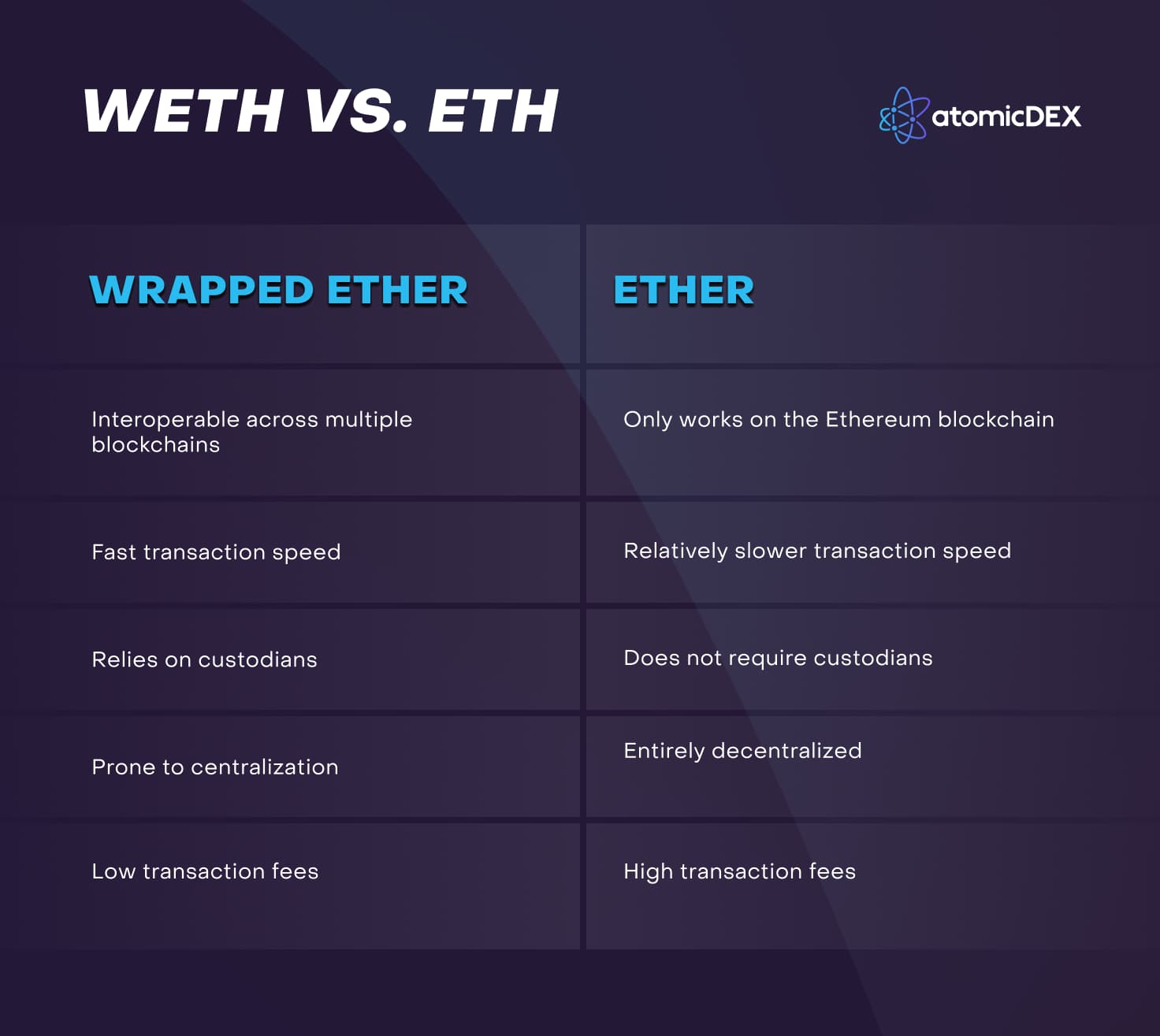
Table of contents
Since the emergence of blockchain technology, many different networks, and their tokens have offered unique value and functionality. However, these blockchain networks have a significant interoperability problem.
In most cases, holders of native tokens on one blockchain can’t trade them on another blockchain. For example, Bitcoin (BTC) holders can’t trade their BTC on the Ethereum blockchain. In the same way, people who own Ether (ETH) cannot use their assets on the BNB Chain.
The problem with interoperability stems from the different standards each blockchain uses. Wrapped tokens solve this problem by operating like asset bridges connecting different blockchains.
What Are Wrapped Tokens?
Wrapped tokens are versions of different cryptocurrencies represented on another blockchain. These wrapped tokens have a one-to-one value with the cryptocurrency on its original blockchain and can be 'unwrapped' and redeemed for the original at any point. Generally, the primary purpose of wrapped tokens is to improve interoperability between blockchain applications and assets and to boost transaction speeds at reduced costs.
Wrapped tokens sometimes require custodians that symbolically put the original cryptocurrencies into a wrapper or digital reserve and return a wrapped version that can operate on a different blockchain. These custodians may use smart contracts, multi-signature wallets, or DAOs.
Stablecoins function with the same principle, as each one has a value pegged to another asset (fiat currency in this case). However, while stablecoins have a 1:1 valuation equal to various assets, including fiat currencies, precious metals, and other crypto assets, wrapped tokens can only have their value pegged to crypto assets native to another blockchain.
For instance, Bitcoin itself cannot run on the Ethereum blockchain. Users who want to trade BTC on the Ethereum blockchain must exchange their BTC with a new ERC-20 standard token. WBTC or Wrapped Bitcoin is the tokenized version of Bitcoin on the Ethereum network and has a 1:1 value ratio with Bitcoin. The value of WBTC is the same as that of an original BTC since WBTC uses smart contracts to replicate BTC’s price in real-time, while simultaneously regulating its own supply.
Wrapped tokens solve many interoperability issues and create opportunities for various blockchain services. For instance, wrapped tokens make it possible to run decentralized applications (dApps) in different decentralized finance (DeFi) ecosystems. However, although wrapped tokens must comply with Ethereum’s ERC-20 standard, Ethereum’s native token Ether does not follow this standard and can’t be traded for other ERC-20 tokens.
What is WETH (Wrapped Ether)?
Wrapped Ether or WETH is the ERC-20 compatible version of Ether. Like all wrapped tokens, WETH has a 1:1 value corresponding to ETH. Irrespective of market conditions, users can exchange their WETH for deposited ETH at any time. However, it is noteworthy that traders can’t use WETH to pay transaction fees as they do with ETH. Despite this, Wrapped Ether has many use cases across the DeFi sector.
How Does Wrapped Ether Work?
When ETH is converted into WETH, a smart contract mints a WETH token of the same value as the ETH token submitted for the transaction. The custodian responsible for minting the WETH keeps the deposited ETH token and guarantees that the WETH retains the same value as its underlying ETH token.
In the same way, wrapped Ether can be sent back into the same smart contract for “unwrapping” to receive the original ETH deposited as collateral. The smart contract returns the deposited ETH and simultaneously burns the WETH. This process controls the total WETH supply and maintains the 1:1 ratio with ETH.
WETH enables developers and dApp users to pay lower fees and enjoy faster transactions across multiple blockchains. While ETH holders have to swap their ETH for tokens that other blockchains and related dApps can accept, WETH holders retain the original ETH value across the DeFi space. Generally, wrapping tokens helps to improve transaction efficiency by facilitating easy ERC-20 token swapping without intermediaries.
Wrapped Ether Use Cases
Some common WETH use cases include:
Providing Liquidity
WETH holders can add their wrapped Ether into liquidity pools available on several decentralized exchanges such as Uniswap and AtomicDEX. WETH depositors may then earn from users who swap other tokens using the same liquidity pool.
Regardless of this advantage, liquidity providers face the risk of impermanent loss, which could eventually decrease the value of their deposited tokens. Therefore, it is recommended that intending depositors conduct proper research before committing funds to a protocol. Interested holders may also consider pools with extensive liquidity to significantly reduce the risk of impermanent loss.
Crypto Lending
Another way for WETH holders to maximize the value of their holdings is to lend their wrapped Ether on DeFi platforms where other traders can borrow the tokens. Supported platforms require borrowers to provide lenders with collateral in the form of other crypto assets.
Throughout the borrowing duration, the lenders earn fees that add up to significant gains until the lender is ready to withdraw the WETH committed. Since smart contracts are responsible for the entire lending and borrowing process, it is important to try and only use DeFi crypto lending protocols that have performed a proper smart contract security audit. This audit is necessary to eliminate scams or fraudulent DeFi projects.
Decentralized Trading
Experienced crypto traders usually prefer to trade on margin. With margin trading, traders borrow funds to increase potential profitability. WETH is commonly used among DeFi traders for margin trading on decentralized derivatives exchanges. Additionally, traders use WETH to make bid offers for NFTs on OpenSea, the largest NFT marketplace.
WETH vs ETH Comparison
Although ETH and WETH have no difference in terms of value, there are several operational differences including the following:

A Vital Role In DeFi Adoption
Since the blockchain and DeFi sectors are still in their infancy, a lot more development is imminent. As the sectors grow, the need for interoperability across various wallets, protocols, and decentralized services, becomes increasingly vital to the entire DeFi ecosystem. In addition to bridging operability gaps across blockchains and protocols, wrapped tokens help with crypto and DeFi adoption since they make tokens easier to use across multiple dApps and networks.
WETH and ETH Supported on AtomicDEX
HODL and trade both Wrapped Ether (WETH) and Ether (ETH) on AtomicDEX — a non-custodial wallet, cross-chain/protocol DEX, and cross-chain/protocol bridge rolled into one app.




